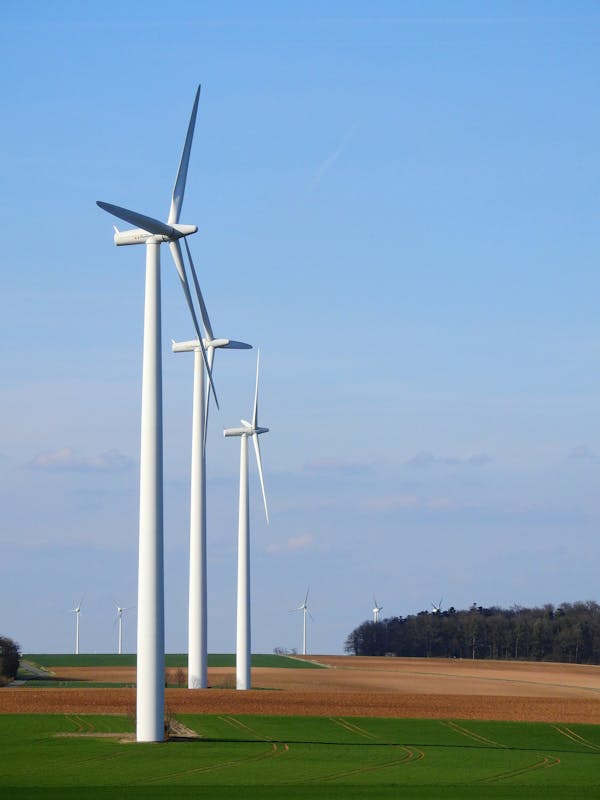Transitioning beyond fossil fuels demands innovative energy solutions that balance scalability, reliability, and environmental impact. By advancing technologies like carbon capture, hydrogen production, and renewable fuels, companies are reshaping energy landscapes. Embracing diverse low-carbon options alongside emerging innovations offers a practical path to sustainable growth and meaningful decarbonization across industries worldwide.
Meeting the Demand for Next-Generation Energy: A Path Beyond Fossil Fuels
To meet the rising need for clean energy sources, global industries are accelerating the shift from traditional fuel systems to innovative renewables and sustainable energy systems—explore the exciting world of new energies with vallourec now defines this modern landscape. These solutions encompass a spectrum of renewable energy types, such as solar, wind, bioenergy, and geothermal, each with unique roles in the global energy transition.
Also to read : What are the Most Pressing Challenges UK Businesses Face Today?
Advancements in hydrogen fuel, geothermal heat utilization, and carbon capture directly reinforce energy transition strategies for power generation, industrial use, and heavy transport. As new energy companies continuously experiment with green power innovations, they help set the stage for scalable, reliable alternatives beyond fossil fuels. Modern strategies focus on both infrastructure modernization—through smart grids and advanced battery storage—and on policy-driven energy market reforms to increase investment in renewables.
Users and businesses alike can expect expanding energy access, better integration of renewable energy storage, and electrification of transport. The next era of sustainable energy systems is increasingly defined by global collaboration and the diversification of sources, making the selection of clean solutions more accessible, robust, and immediate.
Also read : What Strategies Can UK Businesses Adopt to Navigate Economic Uncertainty?
Key Technologies Powering the Energy Transition
Solar power technology has reached new heights with advanced photovoltaic cells and robust mounting solutions, allowing for wider adoption in harsher environments. Efficiency improvements, particularly in solar panel materials and design, are pushing renewable energy generation to ever higher levels. This trend is visible not only in large-scale solar farms but also in distributed installations on homes and businesses.
Wind energy solutions are similarly progressing. Onshore and offshore wind farms development use innovative turbine designs and secondary steel foundations that are more resilient and environmentally friendly. Offshore installations, benefiting from higher and more consistent wind speeds, now supply more reliable clean energy to coastal grids.
Hydrogen is increasingly recognized for its potential as a future energy carrier. Large-capacity, high-pressure storage and green hydrogen production hubs support both mobility and industrial applications, paving the way to decarbonize transport and heavy industry.
Geothermal energy uses and bioenergy applications are also expanding, utilizing specialized corrosion-resistant technologies to capture heat or generate fuel from organic matter efficiently.
Energy storage methods such as advanced batteries and long-duration systems make it possible to integrate variable renewables into grids, ensuring consistent supply—even as traditional fossil sources are phased out.
Collectively, these innovations create a robust foundation for a more sustainable, flexible, and reliable energy future.
Corporate Leadership and Industry Collaboration
Chevron New Energies leads the advancement of scalable lower-carbon solutions by prioritizing sectors with high emissions intensity and limited decarbonization options. Its hallmark initiatives include large-scale Carbon Capture, Utilization, and Storage (CCUS) projects, hydrogen production hubs, and a diversified renewable fuels portfolio. With senior leadership spanning engineering, technology, and policy, Chevron’s team delivers targeted solutions for hard-to-abate industries such as power, cement, and refining.
Industry collaboration amplifies the impact of single-company innovations. International consortia, like the Energies Coalition for Transport & Logistics, unite manufacturers, energy producers, and end-users. This collaboration sparks the development of innovative technologies for decarbonizing transport—sea, air, and road—by combining expertise and sharing investment risks. These coalitions also prioritize regulatory alignment, supporting scalable rollouts of renewable infrastructure in response to shifting market and policy landscapes.
Strategic partnerships and substantial investment drive forward the adoption of sustainable energy, making large-scale projects more feasible and affordable. The focus extends across the supply chain, from research and development to distribution and practical implementation. This broad industry engagement ensures that decarbonization remains a shared, achievable goal—ensuring that green innovations reach every sector reliant on modern energy systems.
Opportunities and Challenges in Scaling Renewable Solutions
Regulatory frameworks and government incentives are pivotal for accelerating renewable energy deployment. Clear policies and long-term commitments help drive investments by decreasing uncertainty. Subsidies, renewable energy certificates, and feed-in tariffs have helped lower the cost of entry for new technologies. However, inconsistent regulations—sometimes varying between national and regional levels—add complexity and slow down widespread adoption.
Financing renewable energy projects presents both innovation and risk. Governments and private actors use diverse models: public-private partnerships, green bonds, and venture capital support. These tools can mobilize significant capital but often hinge on the stability of supportive policies. Gaps in access to affordable financing and fluctuating economic conditions remain major barriers, particularly for emerging technologies and developing regions.
Supply diversification and deployment reliability are pressing concerns. As energy systems integrate wind, solar, hydrogen, and geothermal sources, technical challenges such as grid modernization and energy storage capacity become more apparent. Ensuring a reliable supply means investing in robust grids, smart meters, and digital management systems.
Expanded energy access is another ambitious goal. Modern renewables can increase energy equity if infrastructure is adapted to reach underserved populations. Removing deployment obstacles—such as permitting delays or lack of skilled labor—will be essential for meeting global sustainability objectives.
Game-Based Approaches and Consumer Education
CATAN – New Energies invites players to face energy transition dilemmas, blending entertainment with essential lessons about sustainable energy systems. In this standalone game, participants must choose between expanding fossil fuel infrastructure—relatively inexpensive, but pollution-heavy—or shifting toward renewable energy sources. Every decision directly impacts not only personal progress but also community well-being, as unchecked pollution can halt the game for all.
This collaborative yet competitive setup shines a light on the difficulties of collective action in the real world, where renewable energy adoption demands both strategic thinking and cooperation. The balance between community solar projects and conventional power mirrors debates in communities adopting new renewable energy types—sometimes, a shared problem forces people to find innovative solutions.
Emphasizing renewable energy education through play, CATAN – New Energies serves as a practical tool for advocacy, helping people of all ages understand the stakes tied to energy choices. Lessons learned in-game can foster stronger support for sustainable energy goals beyond the tabletop. Local programs and group initiatives inspired by these principles are building interest and understanding of real-world clean energy transitions.
Advocacy, whether in schools, homes, or neighborhood groups, amplifies knowledge. When communities champion energy literacy, they cultivate future leaders invested in realistic, effective climate solutions.
Future Outlook and Emerging Trends in New Energies
Next-generation technologies are reshaping energy markets. Lithium extraction processes and advanced battery systems are now at the forefront, improving both the scalability and longevity of energy storage for electric vehicles and smart grids. Simultaneously, small modular reactors represent innovative progress in nuclear power, supporting reliable, low-carbon electricity while reducing time and costs for deployment. These developments, combined with investments in energy digitalization, lay the groundwork for greater grid efficiency and reliability.
The hydrogen economy is gaining momentum as infrastructure expansion and new production hubs drive accessibility. Hydrogen’s versatility makes it a promising candidate for transforming hard-to-decarbonize sectors such as steel manufacturing, freight transport, and heavy industry. Fuel cell technology is also evolving, resulting in robust power solutions for mobility and industrial uses. Market interest is reinforced by substantial patents and investments in hydrogen fuel distribution networks.
Strategic visions for climate impact mitigation center on widespread adoption of clean and renewable sources, effective carbon management through capture and storage initiatives, and collaboration across sectors. Partnerships are crucial for advancing research, supporting policy frameworks, and addressing the growing demand for climate-friendly energy systems. These shifts signal a future where power sector decarbonization and practical, widespread clean energy solutions become attainable.






